Avatar: The Last Airbender; A Worthy Adaptation?
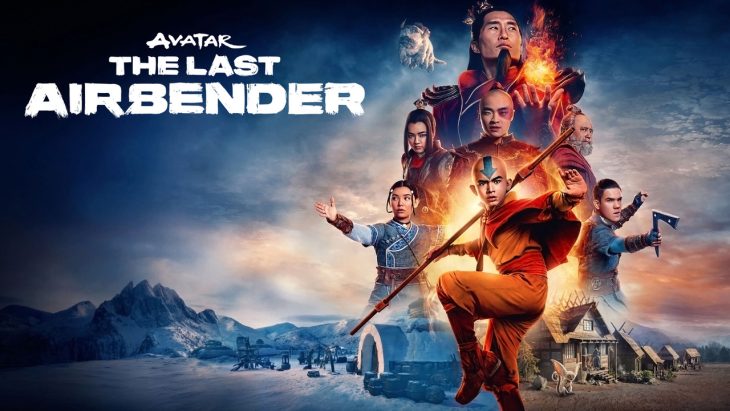
Why hello!
Well, Netflix has dropped the first season of its live-action adaptation of the much beloved animated show Avatar: The Last Airbender. It just so happened that it dropped just as I was falling very ill and had no energy to do anything but binge television. So, naturally, I’m going to talk about it. A few caveats before the hard-core fans come after me for what seems like a controversial opinion on the show (based on what I’ve read).
First, I came to the animated show quite late. I was already a full adult, with a fully formed pre-frontal cortex and everything. AtLAB was not, by any stretch, a formative part of my childhood in the way The Transformers or The X-Men cartoons were for me (aging myself here). I do adore the animated show, but I’m also not connected to it in the way that those who grew up watching it are.
Second, I’m much more lenient for adaptations than a lot of folks, I’ve come to realise. Certainly, there are just some that are horrendous (looking at you, M. Night), but most of the time, I’m okay with the changes made, so long as the spirit of the thing remains intact.
With these things in mind, let’s crack on, shall we?
First of all, I would like to talk about the casting. The adaptation did a fantastic job.
I didn’t think they’d find a kid who would actually look like Aang, but…
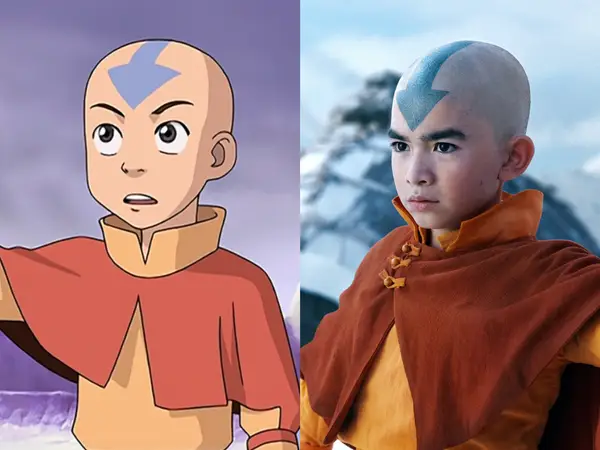
In fact, the entire cast was beautifully done. Here are the main lot:
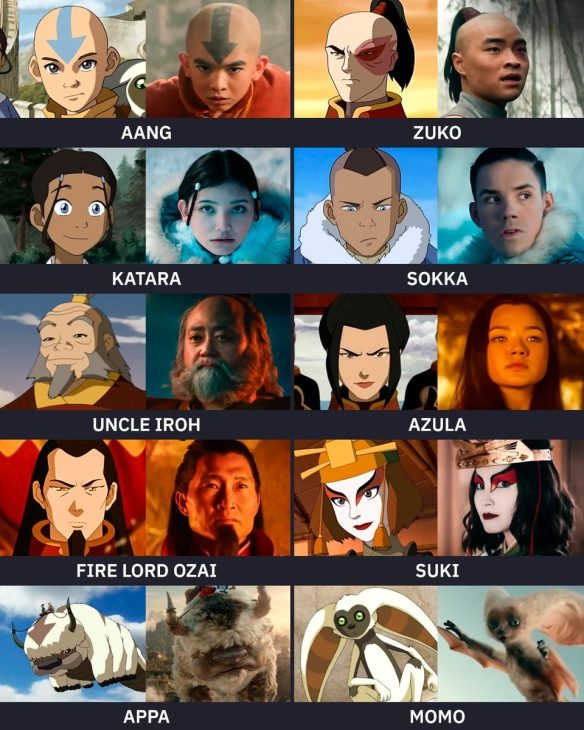
But a special honourable mention definitely belong to the casting of Jet, who looked so much like his character in the animated series that I guessed who he was the minute he popped up on screen, despite the events in the live-action deviating significantly from the animated series.
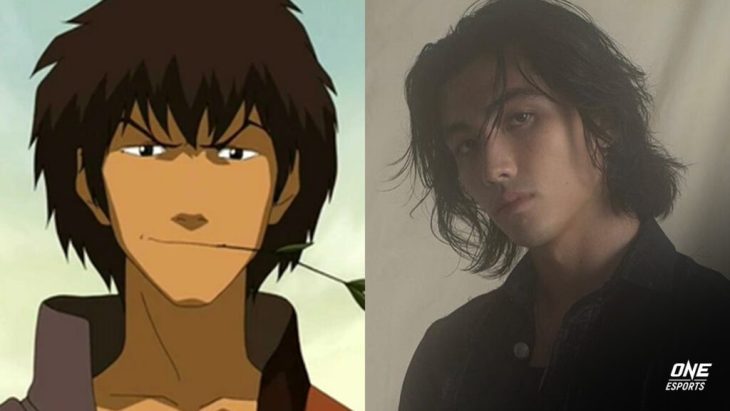
So, the casting was excellently done.
Adding on to the casting based entirely on appearance, the acting was decent as well. There were standouts, of course. Despite having relatively little screen time, the afore-mentioned Jet, played by Sebastian Amaruso, had all the smooth charm that covered a dangerous anger that the character in the animated series did. Very well done!
Sokka, played by Ian Ousley, had his moments, too. He was able to bring all of Sokka’s sass and silliness. In the animated series, Sokka is often the comic relief character. He is the same in the live-action, but a lot more emphasis is placed on the terrible burden that was placed on his shoulders; something no child should have to bear but, in times of war, all too often do. I enjoyed the ‘seriousing-up’ of Sokka’s character in the live action.
His sister Katara, played beautifully by Kiawentiio Tarbell, has all the empathy and head-strong, heart-led aspects of her animated character. I can’t really see Katara without Kiawentiio now. It was wonderfully played.
We didn’t get an awful lot of Azula this season, but Elizabeth Yu still did an incredible job with what little screen time she had. We see a young woman pushed by her cruel father into cruelty; but there are hints of the psychopathy underneath it all. As it’s early days for the series yet, I like to think that they withheld the psychopathy aspect of her character somewhat, painting her in this season, at least, as merely a child who is struggling to gain the approval of her awful, awful father. But there are hints of her own evil, if you’re paying attention, and they’re really well done.
I will note that it hit harder in the animated series how much younger Azula felt in the live-action. This is the same reaction I had to all the characters, but that’s what is so horrible about the situation they find themselves in. These are literal children fighting; some to save a world that the adults have destroyed (which hits a little close to home, actually) and some for the power and approval of their horrific parental figures.
Best of the lot, in my opinion, is Dallas Liu, who plays Prince Zuko.
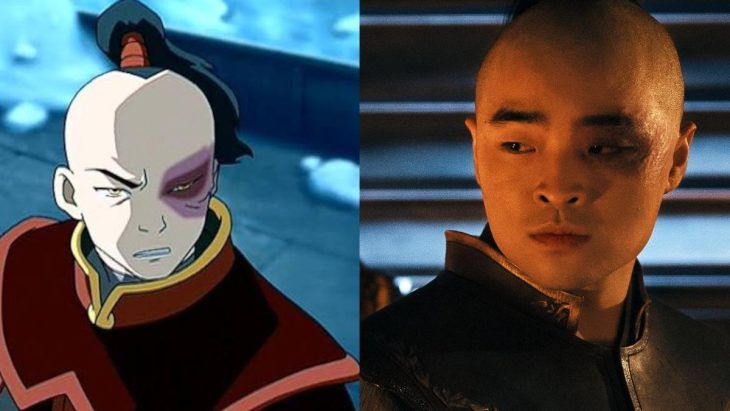
We get from him immediately the little tyrant we got in the animated series, but also from the off, there is the considerable pathos beneath everything the actor does that we didn’t get until later in the animated series. Granted, that kind of thing is nearly impossible to animate, so live-action has an advantage here.
I am tempted to attribute this to my having watched the animated show, so I know more about Zuko than those watching for the first time, and also to the fact that Zuko’s character arc is one of the best I’ve encountered in a long time. Also, secretly soft villain happens to be my favourite kind of character, so, there’s that. But I swear that the delicate balance between tyrant and injured, hurting child is expertly navigated by the actor here.
I won’t comment on Uncle Iroh because he is a treasure, and so is Paul Sun-Hyun Lee, except to say that I sobbed, sobbed during the scenes where the tune to ‘Leaves From the Vine’ underscored the images on the screen. That is due largely to my having watched the animated series, in which I sobbed, sobbed when Uncle Iroh sang the same song in one episode of the show.
The action in the live-action was excellently done. They managed to maintain the individual feel of each elemental bending style that even me, with only a passing knowledge of martial arts styles, could tell them apart. Waterbending, which we see the most of, is still very obviously Tai Chi in the live-action as in the animated series. Firebending was harder for me to pick out, but the athleticism of it definitely points to a northern style (I just looked it up – Northern Shaolin, for the animated series. I’m assuming it’s the same for the live-action). Earthbending definitely looked Hung Gar to me. There are some very typical Hung Gar movements in both the live-action and animated series. Just looked it up, in case I was talking bollocks, and yup. Hung Gar. High-five! I had to look up what the Airbending style was, because I didn’t really recognise it, but it’s Bagua. I hang my head in shame. I have seen (and done some preliminary) Bagua in real life, and I should have recognised it.
Shout out to Sebastian Amaruso, whose fighting with the double hook swords pointed to more than a passing familiarity with the weapons. I should pick mine up again. Hm. Anyway, the point is, the combat scenes were great. I really enjoy when fight scenes are done well. It doesn’t matter if the events in the fight are entirely believable (see also: Crouching Tiger, Hidden Dragon. No, Kung Fu doesn’t teach people how to levitate), so long as the choreography carries the rules of the world and the fight well. And it absolutely did in the live-action.
Okay, now to the most controversial opinion in this article. Spoilers ahead.
The story was fine. Good, even.
There, I said it. Don’t @ me.
Look, there are 20 episodes in first season the animated series and only 8 in the live-action, for obvious budgetary reasons. Even though the animated episodes are roughly half an hour, as opposed to the roughly hour long episodes of the live action, that’s still more time to explore the characters, world and the stories therein for the animated series versus the live action. There really isn’t room for any filler episodes.
Naturally, in that case, the storylines get compressed and even mushed together. So the episodes dedicated to the city of Omashu, and the meeting of Jet and his freedom fighters, and the mechanist (for example) all get mashed together to create something familiar, but also different and new. They also gave the story of the founding of the city of Omashu a queer bend, which I actually thought was a brilliant change.
I didn’t mind these kinds of changes at all, even though I was often struck with a kind-of uncanny valley feeling while watching. I appreciated how much of the original animated series they attempted to include in the live-action as a nod to the source.
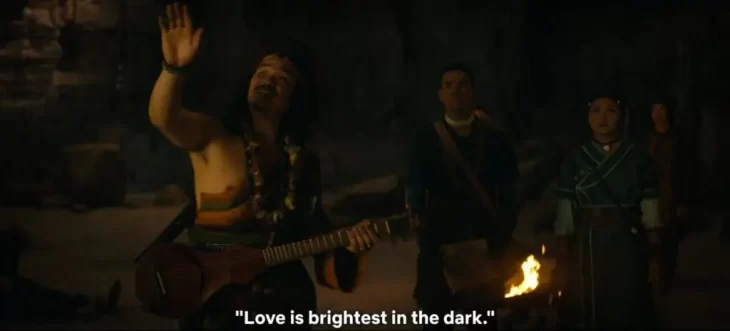
Shout out to the hippies beneath the mountain, and especially to the unusually knowledgeable cabbage vendor. His inclusion in particular made me giggle. I’m very glad he was there.
There was one change in particular that I actually enjoyed, as opposed to simply understood and accepted, and that is the entire character of Bumi. King of Omashu, Bumi is portrayed as wildly eccentric/bordering on crazy in the animated series; but largely still the same fun-loving, mischievous self whom Aang knew before he disappeared. His bizarre tasks in the animated series were designed to help Aang realise things about himself (and Bumi’s own identity) in a kind of ‘Sifu uses insane techniques to deliver valuable lessons’ kind of trope. His true identity was also withheld for quite a while in the animated series.
Not so for the live-action. In the live action, Bumi is unmasked almost immediately and is (rightly) embittered and angry; especially at Aang, whom he feels abandoned his friends to the fight 100 years ago. The tasks Bumi sets Aang in the live-action are a kind of lesson; but the wrong kind. He tries to teach Aang that fighting a war requires hard, hard, often cruel decisions. Do you feed the starving orphans as rations run out ensuring they live long enough to see the Fire Nation bust through their walls, or do you let those children die of hunger to feed your soldiers who are tasked with defending literally everyone? Who lives and who dies? What must be justified and why? These things, these awful decisions are ones that must be made in order to wage a war, and defend your people. These terrible decisions were ones Bumi had to make because, in his mind, the one person — the Avatar (Aang) — who could have stopped it all, abandoned him… and the world. He’s angry. He’s hurting. He’s cynical. He wants to teach Aang a lesson.
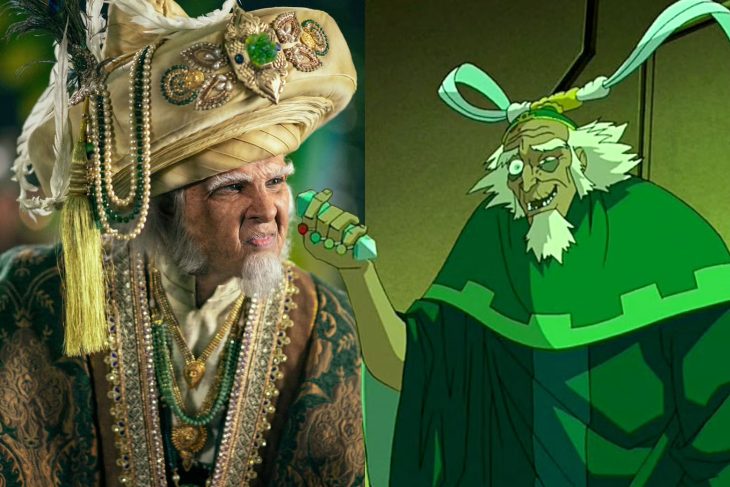
In fact, it is Bumi who learns a lesson. He finds his hope again.
On the whole, the live-action is absolutely much darker than the animated series. It starts, after all, with the literal murder of children. I think this might be because the show trusts that its audience is older than they were when the animated series was released, and can handle it. I think that it’s also because, beneath the adorable, heart-felt surface in the animated version, the story is dark. A leader of one of the nations, who previously lived in harmony, decided to use his temporarily amplified powers to conquer everyone else in some egotistical quest to be the sole arbiter of “balance” in the world — a task normally fulfilled by the Avatar.
In order to do this, to assume the role of the arbiter of all things, he needs to be rid of the Avatar which, in this cycle, will be born to the Airbenders. And so, the Airbenders must die. All of them. Including the children.
All this because the Fire Nation is, in his eyes, the superior people. Besides being eerily familiar in our history and current events, this is dark. It’s not something light and low-stakes the heroes are fighting, even in the cutesy (or, at least, cuter) animated version. It is literal evil.
Being of the disposition I am, I welcome the added darkness. I do love my stories dark and full of despair. It makes the eventual victory that much sweeter. For me at least.
Despite the plethora of articles and videos that seem to trash this live-action adaptation, I, for one, actually really enjoyed it. There were a lot of details from the animated series that were, necessarily, left on the cutting room floor. I don’t have the space, and you don’t have the time, for me to go through them all. Even still, this was definitely a worthy adaptation. I will be rewatching this.
Are you a lover of Avatar: The Last Airbender? Did you watch the adaptation? What did you think? Sound off below.
When S.M. Carrière isn’t brutally killing your favorite characters, she spends her time teaching martial arts, live streaming video games, and cuddling her cat. In other words, she spends her time teaching others to kill, streaming her digital kills, and a cuddling furry murderer. Her most recent titles include Daughters of Britain, Skylark and Human.
Thanks for writing this informative review. …As a part of the unusual(?) half-generation whose earliest required reading included Peter Dickenson’s “AK,” a deep-seated distaste for the concept of child soldiers has pushed me away from enjoying many popular stories, including AtLAB. If this version leans even harder into the darker aspects, I probably won’t watch it, either. But the visual casting for this live-action version does seem unusually precise; is that a regular accomplishment of the studio that created this 8-episode first season?
That’s more than fair.
Though if it helps, as someone who has watched the animated series (and I’m really hoping they stick to it… it seems like they’re definitely headed that way), the overall story has a very non-typical-action-victory ending, closely tied to the character of Aang and his sense of right and wrong, and I really enjoyed that arc (but Zuko’s personal journey will always be the best thing about the series for me).
I can’t answer the question about the studio. I had to look up what studio it was, even; Albert Kim Pictures, Rideback, and Nickelodeon, apparently. I do know that they were in close consultation with the original creators of the animated series before there was some sort of falling out (I’m hazy on the details and didn’t follow it all that closely). That might have something to do with it.
Ah. Yes, that would make sense. Thanks for checking.
Hoping you feel better soon!
Thank you! Slowly mending.
We watched the first episode and I wasn’t impressed.
The story was darker but the storytelling was borderline condescending. One of the things that I liked about the original was the slower reveal of lore.
I found it meant a lot more telling (and monologues) them showing and it bogged down the story.
Maybe I’m out of touch and it’s normal now to explain everything right away but it took some of the fun of piecing a rich world together.
Now this I do agree with, but I figure it was largely because they had less space to stretch than the animated series did; constraints of the medium and all that. I do tend to be a bit more lenient for adaptations than most, though.